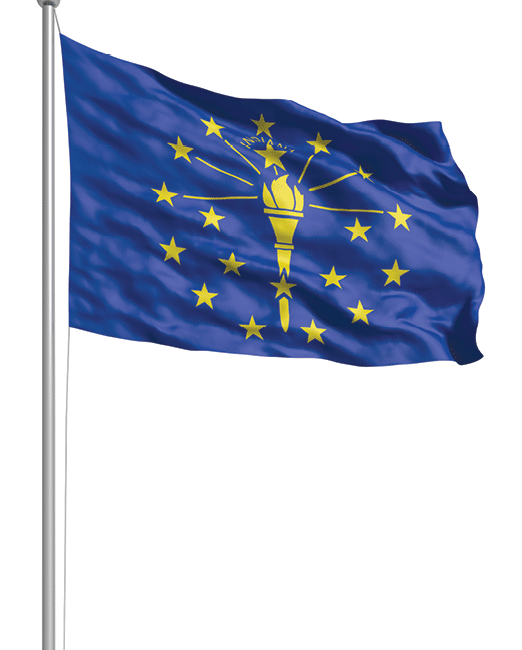
Hoosier Hall Of Fame: The Bicentennial Hoosierist
This story is part of Indianapolis Monthly’s 2016 Indiana Bicentennial coverage, which includes our list of the 200 Hoosier Hall of Fame picks, designated throughout in bold. For more on this celebration of the state’s first two centuries, click here.
Q: Indiana has “Indian” built right into the name. So how come so few Native Americans actually live here?
A: Because when settlers arrived in the 19th century, they began getting rid of them and any legal claims they had to the land. By 1840, after a series of battles (see above) and treaties (a.k.a. “land grabs”), the state was largely bereft of its native occupants, which included the Delaware, Shawnee, and Potawatomi tribes. Today, the Miami Nation of Indiana is composed of folks of Miami descent who didn’t move, though the group isn’t recognized by the federal government. The Miami Tribe of Oklahoma reports that about 500 of its members reside here, and it’s planning a cultural-resources office in Fort Wayne—a city founded by and named after General “Mad” Anthony Wayne , who built the stronghold in the middle of Miami territory as a bulwark against Native American resistance.
Q: Why is “On the Banks of the Wabash, Far Away” the state song instead of “Back Home Again in Indiana”?
A: Chalk it up to timing. Written by Terre Haute native Paul Dresser and published in 1897, “On the Banks of the Wabash, Far Away” was one of the biggest musical hits of the 19th century. It earned more than $100,000 in sheet-music revenues, back when that was serious bank. Making it the state song in 1913 was a no-brainer, not least because “Back Home Again”—one of whose two composers wasn’t even a Hoosier—wasn’t published until 1917. The latter song (aided by Jim Nabors’s yearly rendition at the Indy 500) swelled in popularity while the former faded—kind of galling, given that “Back Home Again” pulls its smarmy references to sycamores and “new mown hay” straight from its predecessor in seemingly deliberate fashion. It’s a wonder there wasn’t a lawsuit. If imitation is the sincerest form of flattery, then Dresser must’ve felt very flattered indeed.
Q: Who came up with the design for Indiana’s state flag?
A: Return with us now to the thrilling year of 1916, when Hoosiers celebrated the state’s centennial. Since for some reason we didn’t yet have a state flag, the General Assembly proposed to remedy the situation with a contest to design one. After sifting through more than 200 entries, the Daughters of the American Revolution gave top honors to a banner created by Mooresville resident Paul Hadley. It featured the now-familiar blue background, a torch representing liberty and enlightenment, rays symbolizing the far-reaching influence of those ideals, 13 stars in an outer ring to represent the original 13 colonies, another five for the states that joined the Union before us, and one more (slightly larger than the rest and directly over the torch) representing Indiana itself, the 19th state. The General Assembly adopted the new getup in 1917, after making only one minor change: They added the word “Indiana” to the flag, just in case the sight of it flying over the State House wasn’t a big-enough tell. Hadley earned a $100 prize for his efforts, plus immortality in the form of Mooresville’s Paul Hadley Middle School.





